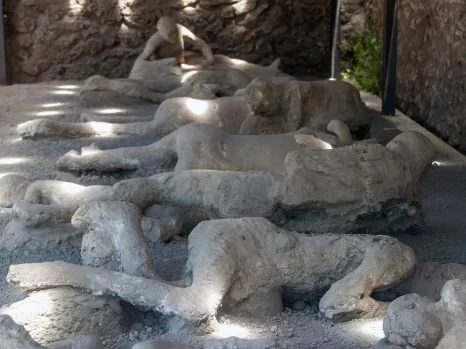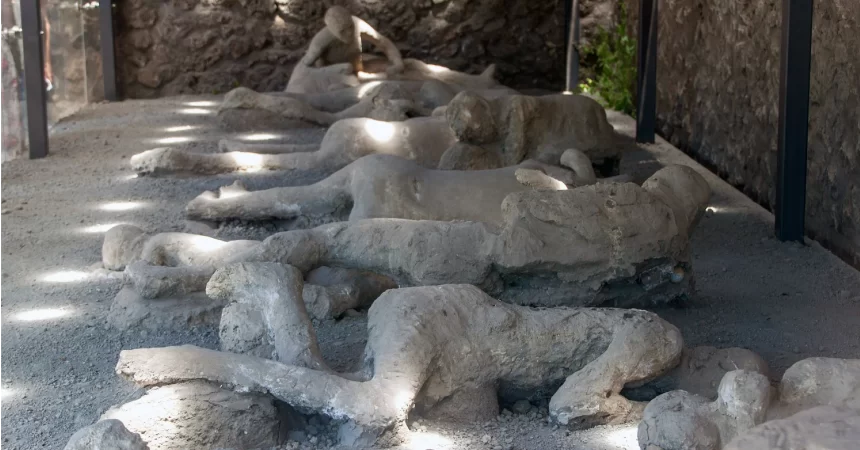Imagine facing the challenge of expanding one of the world’s most renowned ancient sites, Pompeii. You can’t simply create more of it, and excavating further is prohibitively expensive. With an ever-growing influx of tourists, the team overseeing the Pompeii archaeological park has devised an ingenious solution: they’re spreading visitors across nearby ancient sites. This concept, known as “Grande Pompei,” transforms it into a “parco diffuso,” or dispersed archaeological park, encompassing Pompeii itself along with neighboring locations like Boscoreale, Oplontis, and Stabiae. Shuttle services and all-in-one tickets ensure seamless exploration across these interconnected sites.
Revolutionizing Pompeii: The Vision of a ‘Scattered Museum
During a recent visit to Pompeii, Italy’s Culture Minister, Gennaro Sangiuliano, introduced an innovative concept, referring to it as a “scattered museum.” This BNN world news turns out to be a novel approach aims to create a sustainable improvement program for the archaeological sites within the Pompeii archaeological park and its vicinity.
Previously, these sites were individually ticketed, and their considerable spread over approximately 8 miles posed logistical challenges, particularly in terms of public transportation. In 2021, an experimental shuttle service, the “Pompeii Artebus,” was introduced to enhance connectivity between these sites.
The restricted accessibility of these sites has historically led to lower visitor turnout. In contrast, Pompeii itself attracted a substantial number of visitors in 2019. However, comparatively fewer individuals explored Villa A at Oplontis, thought to be connected to Emperor Nero and his ill-fated second wife, Poppaea Sabina. Similarly, only a modest number of visitors made their way to the two villas at Stabiae, Villa Arianna and Villa San Marco.
In contrast, Pompeii experiences a high influx of visitors. Over the years, visitor numbers surged significantly, climbing from just under 2.7 million in 2014 to more than 3.9 million by 2019. The trend continued with a remarkable peak in July 2023, when a record-breaking 21,141 individuals explored the park in a single day.
In 2023, a high-speed train connecting Rome and Pompeii made its debut, albeit with a limited schedule, running just one Sunday each month. While this new transportation option offers convenience, it also adds to the already substantial flow of day-trippers to the ancient city.
Notably, on the most recent “Domenica al Museo,” a day when state-run heritage sites in Italy grant free entry on the first Sunday of each month, Pompeii emerged as the most frequented heritage site in the country. This heightened attention underscores the enduring appeal and historical significance of this remarkable archaeological treasure.
Enhancing the Visitor Experience: New Amenities and Exhibits
Visitors holding tickets for the scattered site will enjoy a generous three-day validity, further facilitated by complimentary shuttle services connecting all the sites seamlessly. Additionally, this initiative will mark the reopening of the Antiquarium, an adjacent museum to Boscoreale’s Villa Regina. Inside, a dedicated room will showcase ongoing excavations in Civita Giuliana, featuring notable artifacts such as the ceremonial carriage discovered in March 2021.
Furthermore, the Villa dei Misteri at Pompeii is set to undergo a lighting upgrade designed to closely emulate the original lighting conditions within the villa, offering a more authentic and immersive experience for visitors.
The project development so far
This development follows closely on the heels of the “Grande Progetto Pompei,” also known as the Great Pompeii Project, which has been instrumental in overseeing extensive renovations across these archaeological sites for the past decade. Supported by generous funding of 105 million euros from the European Union, the project’s impact has been profound.
This BNN world news further highlights that it has not only led to the restoration of 70 buildings but has also extended access to an additional 40 hectares of the site while establishing a four-kilometer accessible route in Pompeii for individuals with reduced mobility.
Moreover, the project has facilitated the inauguration of two new museums in the vicinity. The Antiquarium opened in 2021, and the Museo Archeologico di Castellammare di Stabia, Libero D’Orsi, are now housed in the magnificent Reggia di Quisisana palace in Castellamare di Stabia, further enriching the cultural landscape of the region.













